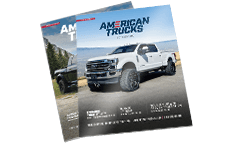
How to Install a Truck Winch
If you own a truck, you need a winch. It’s that simple. From off-road adventures to hauling that old stump out of your front yard, winches are truly multi-faceted when it comes to the wide range of their potential uses.
For those not familiar, a truck winch is a mechanism that winds wire around a drum while keeping a steady tension on it, enabling you to pull everything from cars and trucks to logs and boulders. Depending on the weight of your vehicle and the weight of the winch, it can even be used to pull your rig out of mud, sand or mountain streams when you unexpectedly get stuck in the muck.
Heavy-duty models that include the Chevy Silverado winch, Toyota Tundra winch, or Ford Ranger winch are designed specifically for use with your make, model and year. Depending on your intended usage, one of the biggest choices you’ll have to make is between an electric or hydraulic winch.
Electric winches are known for their easy installation, bolting onto your rig with a couple of wires running up to your truck battery. They’re available for both the older 24-volt systems and the more modern 12-volt setups. Hydraulic winches feature continuous pull time, enabling them to be used non-stop for extended periods of time. In addition, hydraulic winches don’t require your engine to be running during use, saving considerable gas in comparison to their electric counterparts and often making them the preferred choice.
Compared to some of the other accessories for your rig, mounting a truck winch is a piece of cake.
Step 1: Select a Winch
Select a winch with the highest weight rating possible, making sure your rig can accommodate the amperage draw it will require. High-performance winches, like a Warn winch, will list the required amperage on the winch itself. Once you’ve found that, simply locate the corresponding figure on your battery.
Step 2: Choose the Right Winch Line
Many winches come complete with a stock winch line. If you need something more robust, buy either a nylon cable or a different spool of wire rope. Note: wait to switch out the line until you’ve mounted the winch to your rig.
Step 3: Decide Mount Location
Decide whether you want your truck winch mounted on the front or the back of your rig and select the appropriate hardware. Many kits come complete with winch mounts, but exactly which pieces you’ll need to use will depend on the location of the winch.
Step 4: Mount the Winch
Mount the winch according to the specific instructions included with the kit. These instructions will take into account your vehicle and the selected location you’ve chosen to mount your truck winch.
Step 5: Connect the Wiring
Connect the winch’s positive lead directly to the battery using heavy gauge cable, grounding the negative lead to the battery or the chassis of your truck.
Step 6: Spool the Winch Line
If you’re using the stock winch line, you’re done. If not, connect the new winch line to the winch’s spool and turn the winch on to spool the line in slowly. Make sure you keep the line taught while spooling it in.
When it comes to Dodge accessories and other upgrades for your rig (no matter what you’re driving), a truck winch is one of the handiest add-ons you’ll ever buy. Simple to install and even simpler to use, the potential they provide for the outdoor enthusiast is practically limitless.

